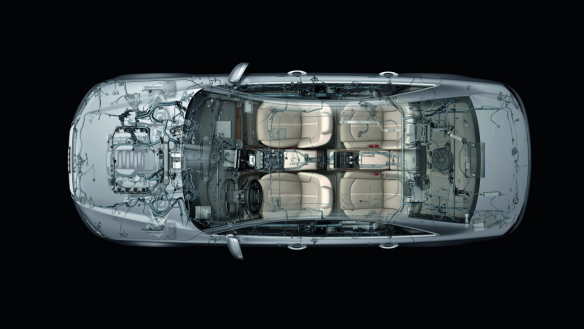Networking
The top models from Audi, from the A6 (Combined fuel consumption in l/100 km: 9.8 - 4.9; Combined CO2-emissions in g/km: 229 - 129)** to the A8, integrate a multitude of infotainment and assistance functions using a new architecture. Previously developers always installed new sensors and data bus segments to meet the steadily increasing communication requirements of the controllers. Audi is using the Flex Ray bus system for the first time in the A8. This system permits transmission of data between the control units for the chassis and the assistance systems in real time.
As the central hub for information, Flex Ray allows all the control systems to access the sensors. The Audi Sensor Array (SARA) bundles and manages the data. Compared to the previous bus architecture, the system is like a six-lane highway versus a country road. Bandwidth has increased by a factor of 20. Flex Ray ushers in a new era in vehicle electronics. The new network can also be used in many other fields of technology in the future.
A conventional onboard network in a large sedan comprises up to 1,500 individual wires and weighs roughly 50 kilograms (110.23 lb). In the A8, Audi reduced its weight by 8 kilograms (17.64 lb) despite the numerous new functions. The cross-sections of all the wires were minimized, and the main battery lead is made of lightweight aluminum rather than copper.
**Figures depend on the tires/wheels used.
Status: 2011
